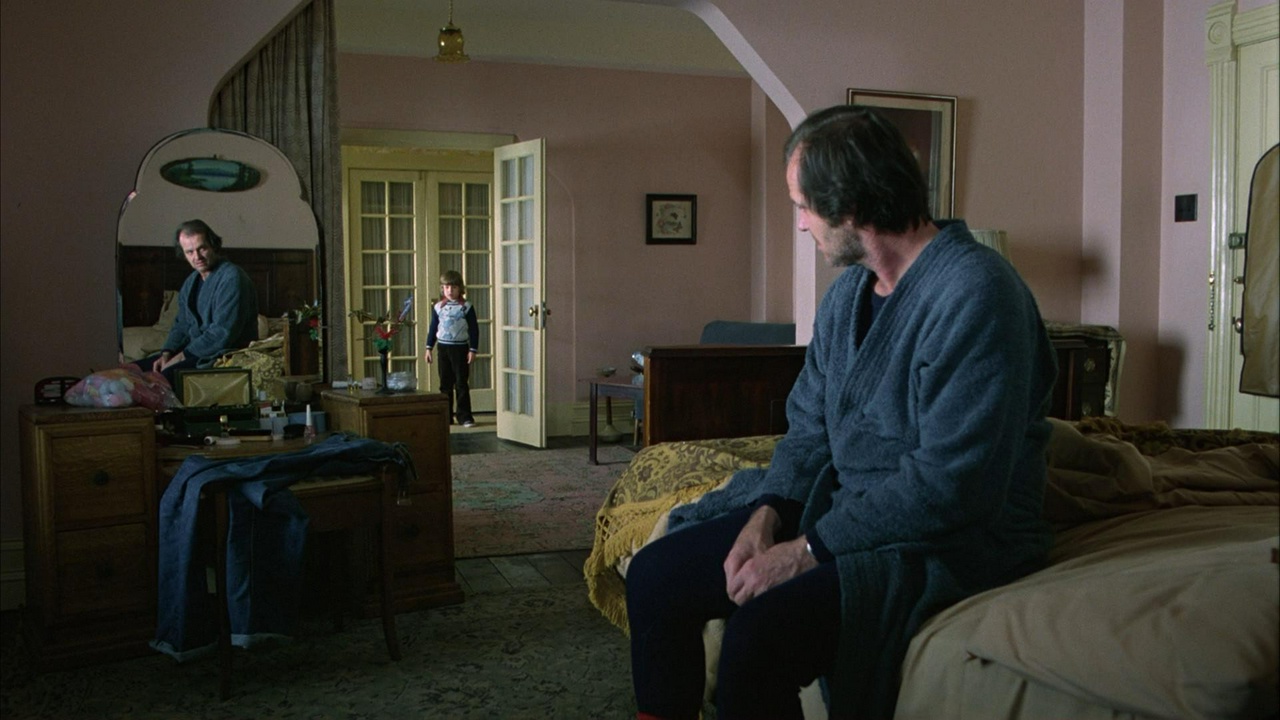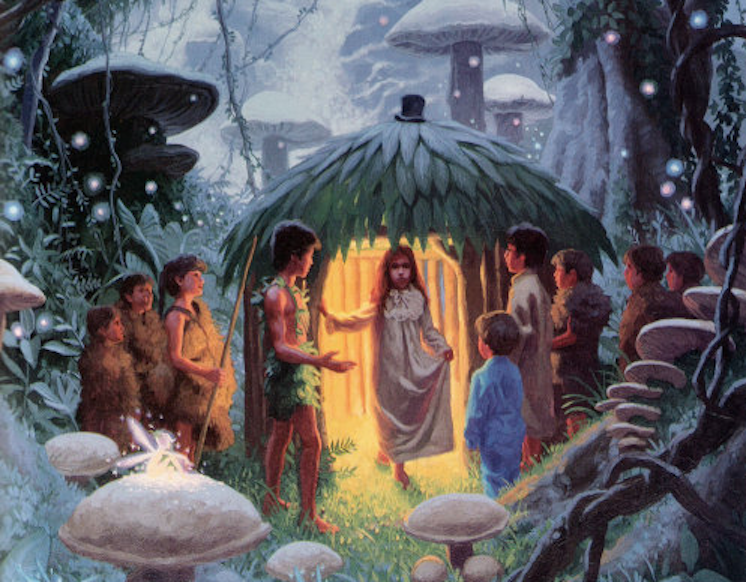the artist's way: bluebeard, wetiko, and other mythologies

In 2024 I spent several months—probably from late January until July—studying up on what is called the Bluebeard cycle. I'd intended to write about that fairytale's influence on, specifically, adventure games. This endeavor was precipitated by an interview with game designer Roberta Williams, who'd told me that all her games' narratives have been based, in some way or another, on Bluebeard.
Prior to our interview I'd spent an inordinate amount of time researching and/or ingesting every piece of media Williams had ever, in the course of her career, named an influence, which had led to a number of questions about "mansion as mirror of the psyche" and "mansion as puzzle box." This new insight about Bluebeard had sent me rocketing off in a not-totally-different direction.
The short version of the Bluebeard fable is this: Recently married, Mr Bluebeard is going out of town on business, and he gives his latest bride free rein of the mansion. "You may open any door but one," he tells her. He shows her the forbidden closet that she must never open. Then he gives her two keys: the larger, a skeleton key that can open all doors but one; the smaller, a golden key that unlocks only the closet door.
The instant Bluebeard leaves, his bride unlocks the closet, obviously. Inside, she finds the bodies of six to seven previously-missing wives. In her shock she drops the golden key; it lands in blood that is still pooling on the floor. She tries in vain to wipe the blood away, but the golden key is seemingly stained permanently. Bluebeard comes home early and demands his keys back. His wife surrenders them, and here the husband notices the bloodstains and understands that his wife has been 'unfaithful' by discovering his crimes. "Madam, you must now die," he tells her. At this point the fable branches in myriad directions, but it usually concludes with Bluebeard being slain, his bride rescued by a family member. (His wife is never given a name.)
During the interview, Williams asked if I knew the fable. I did—though not as well as I'd thought, since one of my subsequent interview questions was "why do all of your adventure games include two keys, a larger skeleton key, and a smaller key to a little box or a secret room," which stumped her and me both—but it is true that Bluebeard is hardly the fable readers know best. "A tale that centers on marriage," writes folklore scholar Maria Tatar, "and focuses on the friction between one partner who has something to hide and another who wants to know too much, it did not prove attractive to tale collectors, who were eager to assemble stories that would appeal to adult sensibilities about what was appropriate reading for children."
Not that the story was ever intended for children...! Although Charles Perrault's canonical version of the fable is an admonition to women to be less snoopy and intrusive—with later renditions making much ado about "succumbing to temptation" and "original sin"—Tatar argues that Bluebeard was, in its original oral incantation, a warning to know one's partner pretty well before marriage. In other ancient variants of the fable, Bluebeard might be swapped with either a wizard or a common criminal. Sometimes his beard is a different color. Sometimes the key is an egg instead. ("A stained key, a blood-spattered egg, a withered flower, or a bruised apple betray the wife's transgressions to the husband," Tatar elaborates.)
In more contemporary retellings, ranging from the Gothic novel to Hitchcock, the narrative focuses on "feminine" curiosity and scrappy derring-do—always with the fable's mystery/horror elements still intact. "[...U]nderstanding how 'Bluebeard' has engaged in shape shifting over the centuries," writes Tatar, "challenges us to think about the ways in which stories that we think of as 'timeless' and 'universal' constantly have to reinvent themselves in order to ensure their survival."
I've written reams on the topic but, this far along in the project, all I've managed to get down is little more than an adjunct to Maria Tatar's preexisting work. Additionally, my initial research jag made the critical error of overemphasizing outcomes for the intrepid female protagonist—that is, Bluebeard's unnamed wife—and not enough focus on what drives Bluebeard. (Tatar herself dismisses these literary undertakings to assign human motivations, which are often sympathetic, as "attempts to rehabilitate" Bluebeard.)
A friend previously asked why the onus is always on the Gothic literary heroine to solve the mystery of a man's enigmatic psyche. At the time I'd said I wasn't sure; once she's unlocked the basement closet, I'd joked, the only surprise awaiting her is "girl, he hates you."
But what if the matter is denser than this?

In almost all versions, Bluebeard is characterized as a misfit or outsider, albeit a wealthy one, set apart from others because of his eponymous blue beard. In many retellings of the fable, the titular Bluebeard is also an artist: one who, often, resents his wife and/or child for interrupting his 'great work', which has assumed priority over all other responsibilities. (Although I've not yet read it, according to my friend Em, Kurt Vonnegut's Bluebeard is also about this—a claim that is substantiated by scholarly dispatches.)
Stephen King's horror novel The Shining is one example of this type of Bluebeard, as distractible writer Jack Torrance's frustration at his own manuscript is increasingly projected toward easier, external scapegoats: spouse, child, day job.
Jack Torrance's son Danny hesitates to open the door to the Overlook Hotel's room 217; as the child considers his own fascination with the forbidden door, he recalls the Bluebeard fable. Tatar excerpts this passage from King's The Shining in her own work on the Bluebeard cycle, Secrets beyond the Door:
The name of the story was Bluebeard.... Every day Bluebeard went off to work and every day he would tell his pretty little wife not to look in a certain room, although the key to that room was hanging right on a hook, just like the passkey was hanging on the office wall downstairs. Bluebeard's wife had gotten more and more curious about the locked room. She tried to peep through the keyhole the way Danny had tried to look through 217's peephole with similar unsatisfying results.
And then,
The old fairy tale book had depicted her discovery in ghastly, loving detail. The image was burned on Danny's mind. The severed heads of Bluebeard's seven previous wives were in the room, each one on its own pedestal, the eyes turned up to whites, the mouths unhinged and gaping in silent screams. They were somehow balanced on necks ragged from the broadsword's decapitating swing, and there was blood running down the pedestals.
Terrified, she had turned to flee from the room and the castle.
Stephen King very famously hates Stanley Kubrick's cinematic version of The Shining because it eliminates the patriarch's redemption arc in favor of a more cynical and, to many minds, inevitable end. When stripped of the elder Torrance's active battle against pervasive environmental conditions/Forces of Darkness—as well as his final, winning act of self-sacrifice—all the previous events of the story are rendered meaningless, King argues. If King's book is about cycle-breaking, then Kubrick's movie is about the cycle simply continuing.
It is King's own dependence on the trope of the "Indian burial ground" that informs Kubrick's retelling, at least aesthetically. Multiple film critics have remarked (controversially!) on the film's many visual cues acknowledging the influence of Indigenous American culture on the immediate environment—an influence that gives way to more expansive themes about the settling and colonizing of already-occupied native lands, and the systematic disenfranchisement, and genocide, of Indigenous Americans by European settlers. The setting of The Shining, therefore, is imbued with generational shame, the kind of shame that drives and perpetuates cycles of violence and abuse—whether on an interpersonal, systemic, or societal scale.

In actuality, this is the de facto setting of all American horror stories. So it's not so much a matter of whether Kubrick intended the haunted, bloody, shame-soaked legacy of American history to inform his version of The Shining, and it doesn't so much matter whether audiences and critics agree. The setting, which itself is not fictitious, is haunted by shame, whether we really want it to be or not.
According to the late scholar and activist Jack D. Forbes in his 1978 Columbus and Other Cannibals, many Indigenous Americans recognized, in European explorers and colonizers, the wetiko, or "cannibal spirit." More insights follow at Kosmos Journal:
Wetiko is an Algonquin word for a cannibalistic spirit that is driven by greed, excess, and selfish consumption (in Ojibwa it is windigo, wintiko in Powhatan). It deludes its host into believing that cannibalizing the life-force of others (others in the broad sense, including animals and other forms of Gaian life) is a logical and morally upright way to live.
Wetiko short-circuits the individual's ability to see itself as an enmeshed and interdependent part of a balanced environment and raises the self-serving ego to supremacy. It is this false separation of self from nature that makes this cannibalism, rather than simple murder. It allows—indeed commands—the infected entity to consume far more than it needs in a blind, murderous daze of self-aggrandizement. Author Paul Levy, in an attempt to find language accessible for Western audiences, describes it as 'malignant egophrenia'—the ego unchained from reason and limits, acting with the malevolent logic of the cancer cell. [...]
In his now classic book Columbus and Other Cannibals, Native American scholar and historian Jack D. Forbes describes how there was a commonly-held belief among many Indigenous communities that the European colonialists were so chronically and uniformly infected with wetiko that it must be a defining characteristic of the culture from which they came. Examining the history of these cultures, Forbes laments, "Tragically, the history of the world for the past 2,000 years is, in great part, the story of the epidemiology of the wetiko disease."
This piece of writing goes on to take the stance of the aforementioned Paul Levy: that wetiko is a memetic idea as well as a pattern of behavior, an infection that is easily transmitted from person to person. It is the instinct to exploit, to redraw boundaries and turf others out, to appropriate and commodify, and to strip-mine other people, dehumanizing them as if merely yet another resource to be drilled into. (If they finally cannot be exploited in any fresh new ways, they are eliminated.) This is the origin of what I often call 'billionaire brain', "short-circuit[ing] the individual's ability to see itself as an enmeshed and interdependent part of a balanced environment and rais[ing] the self-serving ego to supremacy." One places oneself high in an ivory tower, imperiously disconnected from the effects one's behavior has on others. (Other faith traditions might've called the spirit Leviathan, associating its all-consuming force with potentially-destructive human qualities like pride or envy.)

With his three books on wetiko, along with a prequel about "malignant egophrenia," Paul Levy emphasizes that this cannibalizing spirit lies dormant, if not active and awake, inside all of us. This, the stress- or fear-induced potential for destructive self-serving behaviors, is likely a Jungian shadow—what could be termed the false self or disintegrated personality. Unexamined, it would presumably become habitual, normalized, inculcated, generational.
Bluebeard beheads and exsanguinates anyone who stands in the way of his admittedly unclear ambitions. "The Bluebeard story," writes Tatar, "presents itself as a map for thinking about issues broader than romance, power, and marriage. In the last two decades of the twentieth century, Bluebeard was a tale to which a number of German writers resorted in their efforts to come to terms with a past that could not be worked through or mastered."
She continues,
Faced with crimes so heinous that they defied representation, some writers found that the only way to write about Germany's past was to return to the "simple form" of the fairy tale, to begin with "once upon a time," as did Günter Grass in The Tin Drum. It did not take long for Bluebeard's chamber of horrors to emerge as an apt metaphor for the gas chambers and other atrocities of World War II. At the same time, the German variant of "Bluebeard," the Grimms' "Robber Bridegroom," was a powerful reminder that storytelling could become a weapon for defeating tyrants.
The Bluebeard archetype is one of self-isolation as well as tyranny. There is also the matter of what often begins as mutual exploitation. Indeed, in most versions of the Bluebeard narrative it is apparent that, in spite of her well-founded misgivings about her svice-married groom, the new wife really is exploiting Bluebeard for wealth and stability.
But the intentions of Bluebeard, a cardboard cutout of a villain, are less clear to us—unless we stop to consider what a spouse stands to gain from the transaction of marriage at all. If Bluebeard does not love his wife (and it's already clear from the tale's dramatic peak that wives, to Bluebeard, are at the very least interchangeable), and if she is not independently wealthy herself, then Bluebeard might else be looking for a parent, a caregiver, a housekeeper, an heir.
If Bluebeard considers himself an artist, however, then he is potentially seeking a much more ephemeral resource: his spouse's belief in him. Taken to the extreme, Bluebeard may hope that his latest spouse is a sort of unconditional, immovable patron—someone who will selflessly subsidize his work emotionally, if not materially. Worse, an infantilized, coddled artist might become temperamental, seeking only fawning, rather than critique. If the spouse should become critical, or wary of the artist's ambitions, or otherwise exhausted—where the spouse's diminished vitality means they are no longer an endless exploitable well of validation or other labors—then the spouse now serves as an obstacle to the artist's goals.
Now Bluebeard's wife is 'clingy', just an amalgam of unmet needs and various maladies. Now she is disposable: This is how Bluebeard's wife transforms into cinema's Wendy Torrance. (It's likely that Wendy enabled or even established this untenable dynamic, too—by strip-mining herself for her family. That's just simple home economics.)

As writer and former science journalist Gillian Valladares Castellino sees it—echoing Paul Levy's warnings—both Bluebeard and his wife live together within each of us. In her post "Bluebeard: the natural predator in us all," she writes,
By far the most comprehensive, meaningful and poetic analysis of the Bluebeard story is suggested by Clarissa Pinkola Estes in Women who Run with the Wolves. She names Bluebeard as 'the natural predator' of the psyche—an inner entity in [all genders] that requires our awareness and containment. Though the story centres around a female character, it should be noted that this 'young woman' represents the inexperienced or immature natural aspect of everyone regardless of gender. The inner predatory force represented by Bluebeard attempts to "turn all crossroads into closed roads" by severing our intuitive nature. It is a malignant force at odds with the instincts of the natural self.
Valladares Castellino continues, "Our task on the way to maturity is to recognise this predator and protect ourselves from it. The Bluebeard story tells us how to do this."
Here the author may be describing the dark side of the bifurcated puer/puella aeternus, a Jungian archetype with its origins in world myths. Jung wrote, of the fully reintegrated puer, "It was this boy into whom Faust had to change, abandoning his inflated onesidedness which saw the devil only outside."
The only sure defense against interpersonal and social cannibalism is the self-awareness of our own predilection for it—particularly in pressure-cooker environments, and especially when we've already tasted the blood of our opposition. The process of understanding our interdependence as well as our own resistance to it is often, counterintuitively, a painful process of personal, critical self-insight, as we search for the haunting within ourselves.
In this way, each of us is simultaneously Bluebeard and his wife: both the puzzle box and the one holding the key. ("You have! to go! inside!") Until then, the two archetypes live, uneasily and perhaps pointlessly at war, inside us all.
This is all just a rough draft, of course—and we have not even begun to touch on the "monstrous feminine." More to come (if not here, then somewhere).